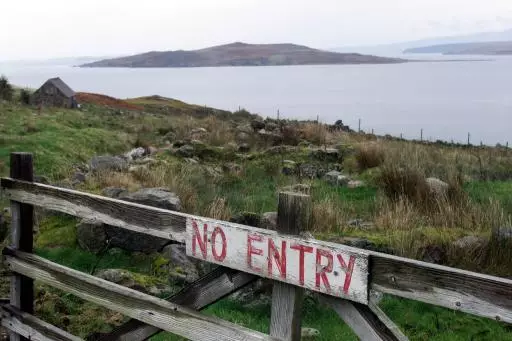
During the Second World War, with the British government suspecting that Germany and Japan were planning to intensify their biological warfare programmes, an investigation began in 1942 into the feasibility of attacking Axis forces using anthrax. The plan was called Operation Vegetarian.
The plan was to disseminate linseed cakes infected with anthrax spores throughout the fields of Germany using aeroplanes. These cakes would have been eaten by the cattle, which would then be consumed by the civilian population, causing the deaths of millions of German citizens. It would also have wiped out the majority of Germany's cattle, creating a food shortage for the remaining German population.
In order to test out whether their plan could be successful, the government chose to conduct a test. For their test site they chose the uninhabited Gruinard Island, which sits just over a kilometre off the coast of mainland Scotland, between Ullapool and Gairloch.
Advert
The test saw cakes containing the anthrax strain 'Vollum 14578', a highly virulent strain of the bacteria, named after its creator, Roy Vollum, the Professor of Bacteriology at the University of Oxford. Eighty sheep were placed on the island and bombs filled with anthrax spores were exploded close to the flock.
What followed was a demonstration of the killing power of the deadly bacteria spores, now one of the most feared agents of biological warfare. Anthrax can be contracted by skin contact, ingestion or inhalation, but it is through inhalation that it is at its most deadly and proves to be fatal in about 95 percent of cases, even with medical treatment.
The sheep started dying three days later - and the final report on the Gruinard Island tests suggested anthrax could be used to render cities uninhabitable 'for generations'. This was supported by the discovery that initial efforts to decontaminate the island after the biological warfare trials had ended in failure because of the high durability of anthrax spores.
The government decided not to go ahead with the plans for the biological attack, because the scale of civilian deaths it would cause was judged to be unacceptable. The five million cakes made to be disseminated in Germany were eventually destroyed in an incinerator shortly after World War II ended in 1945.
However, despite attempts to disinfect Gruinard Island, the spores left by the experiments kept the island in quarantine for 48 years. It was only in 1986 a company was paid half a million pounds to decontaminate the 520-acre island. They did this by soaking the ground in 280 tonnes of formaldehyde diluted in 2,000 tonnes of seawater.
On 24 April 1990, following 48 years of quarantine and four years after the solution had been applied, junior defence minister Michael Neubert visited the island and announced its safety by removing the warning signs. Yet, despite the decontamination, the island remains uninhabited as it is still feared that traces of the deadly bacteria remain.
Advert
Featured image credit: PA Images
Featured Image Credit: